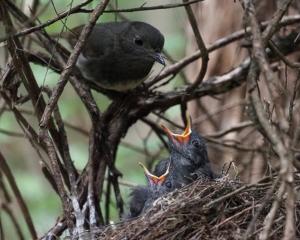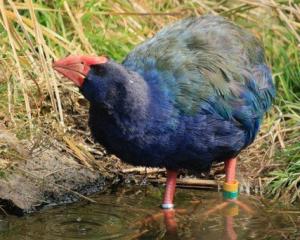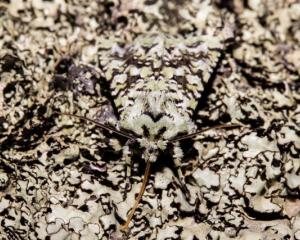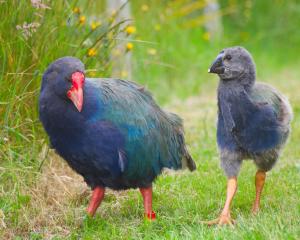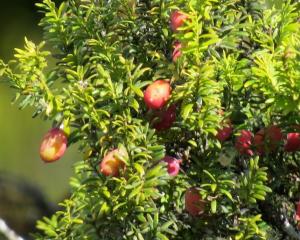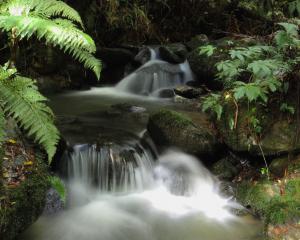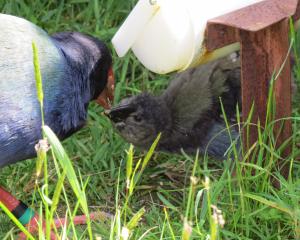For the first time in a couple of hundred years, New Zealand's unique tuatara are free-roaming in a South Island forest, thanks to a recent translocation of Cook Strait and captive-reared animals to Orokonui Ecosanctuary. Sue Hensley reports.
Tuatara are not dinosaurs, although a tuatara-like fossil named Homoeosaurus sounds like one. Confusing? It gets worse - saurus means lizard but neither dinosaurs nor tuatara are lizards.
In fact, the tuatara is the sole survivor of a 230-million-year-old group of reptiles known as Rhynchocephalia (beakheads).
The other reptile orders have numerous members ranging from a low of about 22 to several thousand species, but the tuatara is the lone representative of its order. This is what makes it internationally significant.
It is not surprising that the tuatara is often mistaken for a lizard because the differences are subtle and not easily seen.
On a physical level, the upper jaw and skull bones of tuatara are not hinged like those of lizards but instead are rigidly fixed. There are also two rows of teeth in the upper jaw of tuatara, enabling a very distinctive, saw-like way of processing food.
On the other hand, like lizards, tuatara can drop and regrow their tails, and the so-called third eye often talked about in relation to tuatara is also found in some lizards.
As Associate Prof Alison Cree, of the University of Otago's zoology department, puts it, the tuatara is the closest living relative of lizards that isn't actually a lizard!
New Zealanders have always been particularly proud of the tuatara and its standing on the world stage. It was even on our coinage until 2007.
Its reputation is enhanced by its remarkable biology and longevity. Any animal that lives for 100 or more years certainly deserves respect. Males have no penis, as one boy excitedly told an Orokonui guide. In winter, tuatara slow right down and can go several months without food.
When cool and inactive, they have been reported to breathe as infrequently as once an hour with a heart rate of only nine to 10 beats a minute.
The young have a parietal eye (the so-called "third eye") on the top of the head that is probably light sensitive but not image-forming. The precise role of this sensory structure is unclear, but it is possible that it helps with homing behaviour, as in some lizards.
There have also been suggestions that it helps regulate exposure to UV light, a form of radiation that is critical to growth and metabolism.
The females reproduce only once every two to five years and the usual clutch size of around nine eggs takes about a year to hatch. The eggs cope with large temperature fluctuations and the sex of the progeny is determined by the temperature during incubation. The effect that climate change will have on the sex ratios of hatchlings is an interesting question.
Looking after these creatures living in the slow lane produces some interesting situations.
Valerie Fay over the past four years has cared for the 15 young tuatara held at Orokonui with the assistance of researchers from the University of Otago.
One warmish day, Val entered the pen to discover one of the tuatara lying motionless on the bottom of a water dish. On closer inspection, however, and with a gentle prod, the tuatara moved slightly to show that it was indeed alive. In fact, tuatara do like to cool down or rehydrate in this way and one was observed under the water for 20 minutes.
Then there's their general non-appearance over winter.
It's not easy to look after animals that can't be seen for up to five months before they are sighted again in spring. When they are actually seen during colder periods it can be just as unnerving.
Valerie Fay recalls seeing one outside its burrow in the long grass. The next day, it was still in exactly the same place. But it was also well and healthy.
Tuatara are adapted to the cold and were widely distributed throughout New Zealand before habitat change and rats (stoats and other predatory mammals had not yet arrived) pushed them off the mainland to a few small offshore islands.
In modern times, tuatara have never been further south than Cook Strait. The 44 tuatara translocated to Orokonui from Takapourewa/Stephens Island in October, and therefore are very special. They are the first free-roaming tuatara on the South Island mainland for several hundred years. They will be carefully monitored to see how they grow and reproduce in a colder climate. A second group of 28 captive-reared tuatara arrived in November from Nga Manu Nature Reserve at Waikanae on the Kapiti Coast.
The two welcoming ceremonies underlined just how special these animals are and how privileged Orokonui is to host them.
More people attended the first reintroduction ceremony than almost any other, and Ngati Koata, who are their Nelson-based kaitiaki (guardians), eloquently conveyed their deep feelings for the tuatara.
When three of these animals were brought in for show, a hush fell over the room as they were carried around for people to see close up.
The feathery crest, the powerful feet and claws, the bright keen eyes and the unexpected and varied colours of the tuatara all impressed, but the tuatara had the last say. A loud warning-like "bark" told the handlers when the show was over!
• Sue Hensley is head guide at Orokonui Ecosanctuary. Wild Ways appears in the Magazine section on the first Saturday of the month.



